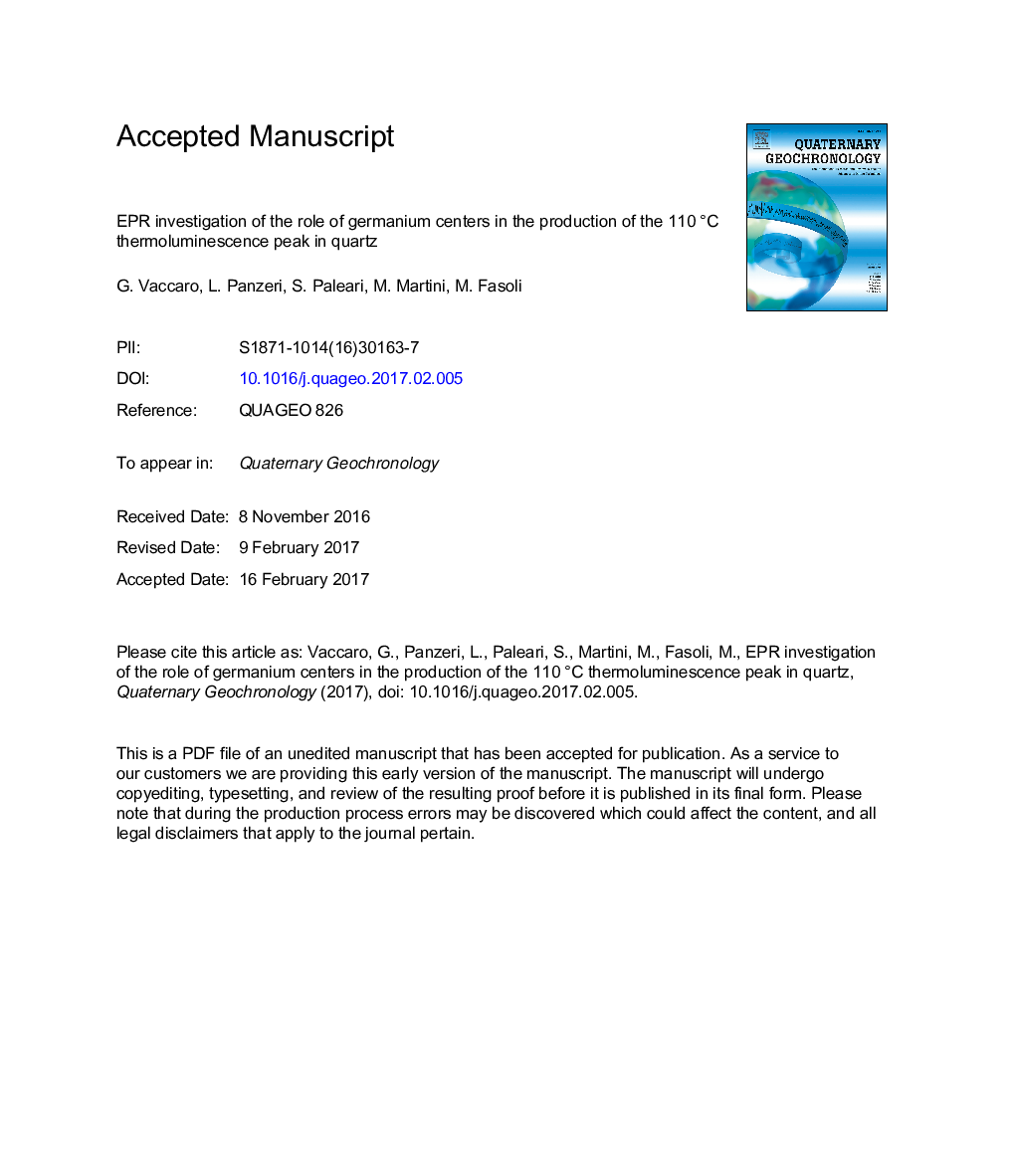| Article ID | Journal | Published Year | Pages | File Type |
|---|---|---|---|---|
| 5784995 | Quaternary Geochronology | 2017 | 17 Pages |
Abstract
The identification of the center acting as electron source for the well-known 110 °C thermoluminescence (TL) peak of quartz is of fundamental importance for practical applications in dating and dosimetry. This TL peak was studied in parallel with the electron paramagnetic resonance (EPR) signal of the [GeO4]â center on natural colourless quartz irradiated at room temperature. Immediately after irradiation, the signals of the 110 °C TL peak and of [GeO4]â center decay exponentially in the same way, yielding a lifetime of 50.4 ± 0.9 min at room temperature. Besides, we acquired the isothermal decay curves for the 110 °C TL peak and [GeO4]â center at different temperatures (the samples were held at the selected temperature in the range of 260-308 K). The lifetimes extracted by the isothermal decays were plotted as a function of reciprocal temperature, revealing again the same behavior of the 110 °C TL peak and [GeO4]â center, both characterized by activation energies very close of 0.76 ± 0.07 eV and 0.77 ± 0.07 eV, respectively. All results of the present work clearly show the role of electron source of [GeO4]â center in the emission mechanism of the 110 °C TL peak in quartz.
Related Topics
Physical Sciences and Engineering
Earth and Planetary Sciences
Geochemistry and Petrology
Authors
G. Vaccaro, L. Panzeri, S. Paleari, M. Martini, M. Fasoli,
